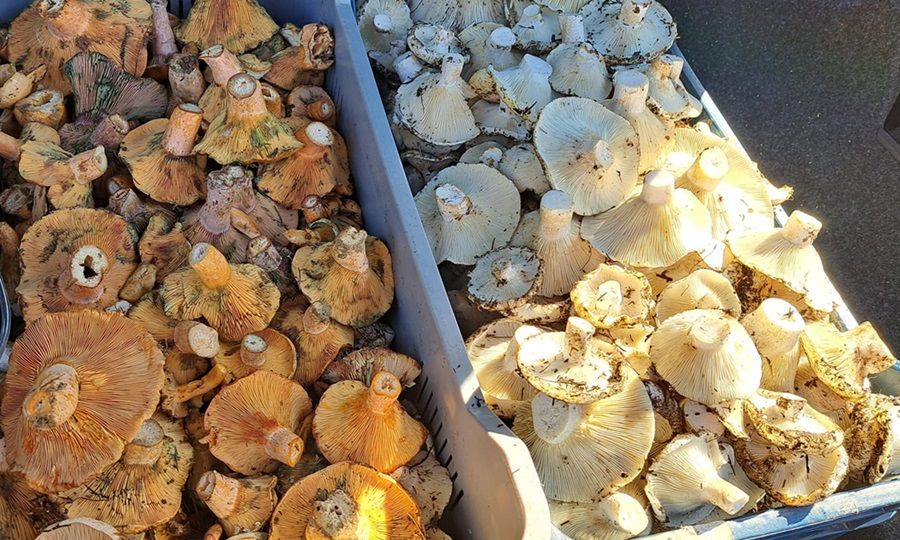

Pavlos Neophytou
Mushroom enthusiasts in the mountainous regions of Cyprus have been treated to a bountiful mushroom-picking season thanks to the satisfactory rains of October.
This year, they are primarily gathering two highly sought-after edible mushrooms: Lactarius deliciosus and Lactarius semisanguifluus, affectionately known as "Kokkinomanitara" among the locals. These mushrooms thrive in the black and rugged pine forests, as well as shrublands, particularly in limestone-rich soils.

Their name is a nod to their vibrant color and the orange-red liquid they release when cut or injured.
Cyprus also sees interest in other mushroom varieties, including Russula delica and Russula chloroides, known as "Aspromanitara," found in forests of black pine, cedar, and Latzia, typically on dry and sunny slopes.
However, the joys of mushroom picking come with their share of challenges and risks.
Chronic Issues in Mushroom Harvesting
The Mycological Association of Cyprus has repeatedly voiced concerns about the mushroom-picking practices to the relevant authorities and media.
These concerns encompass the insufficient protection of forests during the harvesting season, unregulated collection, wild mushroom marketing, the absence of a specialized mushroom Poison Center, and the lack of a red list for endangered species.
Michalis Loizides, the honorary president of the Mycological Association of Cyprus, emphasizes the importance of protecting fungi.
These organisms play a vital role in the ecosystem's functioning, including matter recycling and their symbiotic relationship with trees. He highlights that safeguarding fungi is integral to preserving entire ecosystems.

Environmental Impact
Mushroom collectors using tools like rakes to remove leaves covering mushrooms can inadvertently damage the forest ecosystem. This practice not only kills emerging mushrooms but also harms microorganisms and plants in the area, while aesthetically degrading the forest.
The Department of Forests strongly urges the public to follow proper collection practices and report any violations to the nearest forest station.
Illegal Tools and Practices
Many collectors use tools such as rakes, which is expressly prohibited by the Forest Law. Conviction for using such tools can result in prison sentences of up to one year or fines of up to five thousand euros, or both.
Proper identification of mushrooms is essential, and collectors should only pick mature mushrooms that have released spores, ensuring their future reproduction.
Identifying Poisonous Species
Cyprus hosts numerous mushroom species, and not all of them have been identified. There are potentially dozens, if not hundreds, of poisonous mushrooms on the island. Collectors must learn to recognize each species correctly.
The book "Mushrooms of Cyprus – Edible and Toxic" by Michalis Loizides, Thomas Kyriakou, and Andreas Tziakouris highlights some deadly species.

Amanita mushrooms, characterized by white free lamellae, a ring on the stem, and a volva (sheath) at the base of the stem, are particularly dangerous. Another lethal mushroom is Galerina marginata, found on decaying wood, and it contains high concentrations of Alpha-amanitin.
Several species from the Lepiota and Cortinarius genera also cause fatal poisoning. Additionally, Gyromitra esculenta, previously considered edible, can be dangerous.
Other risky species include Omphalotus olearius, Clitocybe candicans, Clitocybe rivulosa, and various Inocybe species, which contain muscarin. Some species, like Amanita pantherina, can cause death due to their ibotenic acid and musimol content.
The edibility of many species remains uncertain, emphasizing the importance of proper identification and cautious foraging practices.































